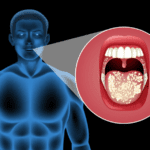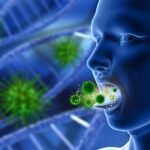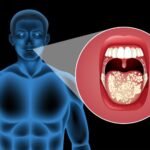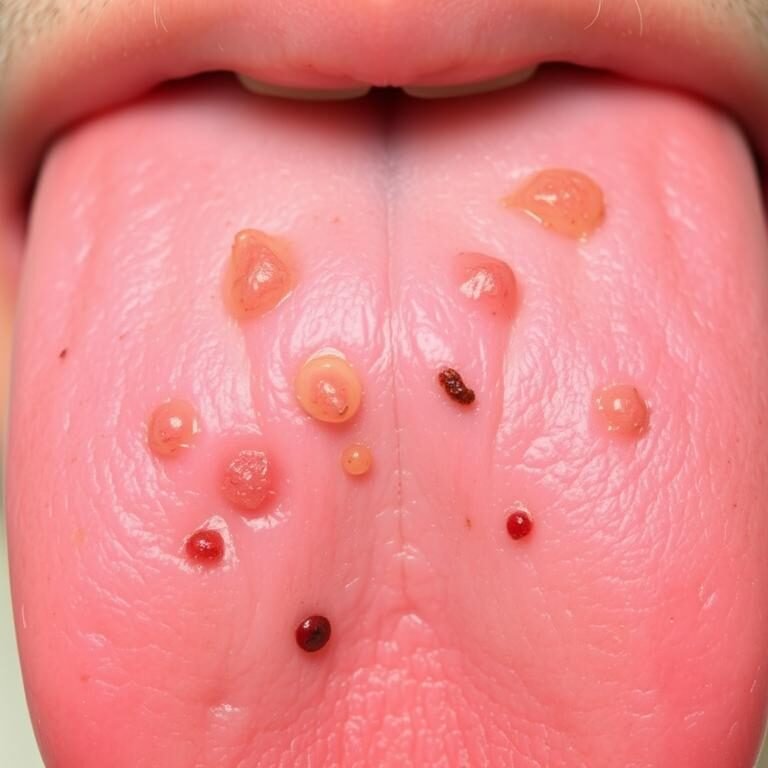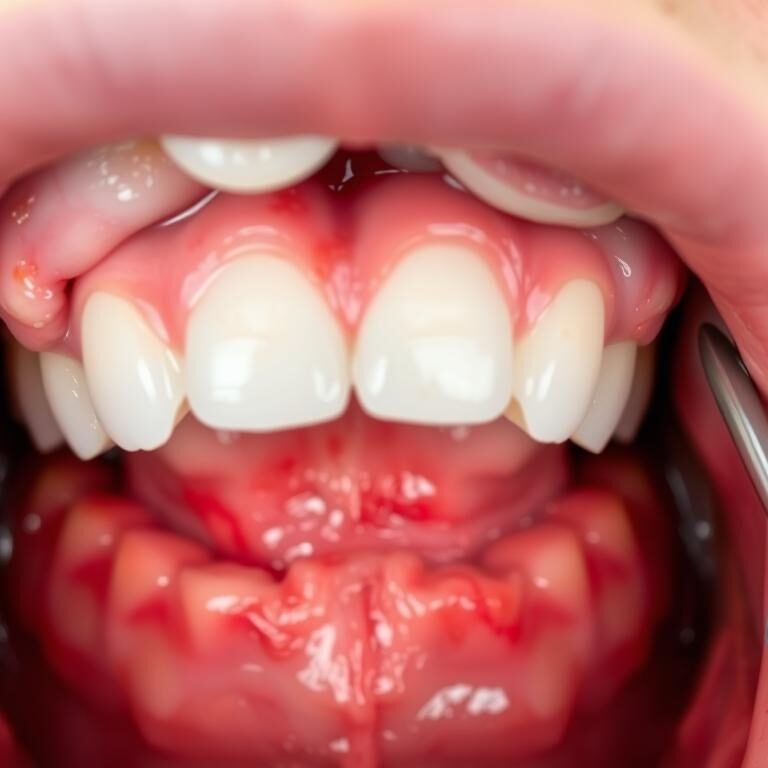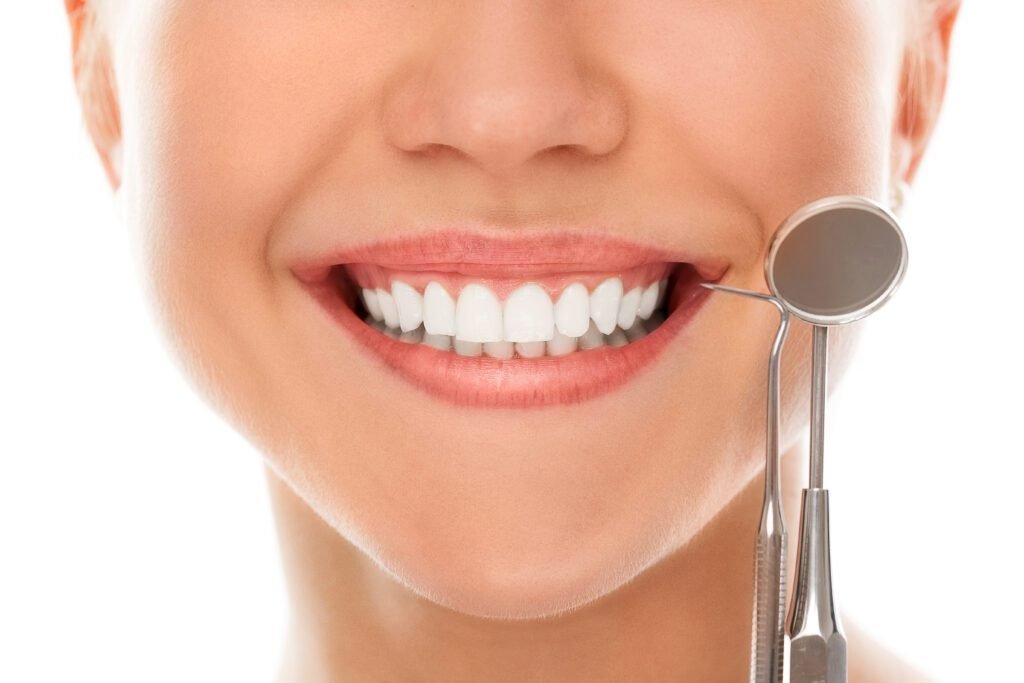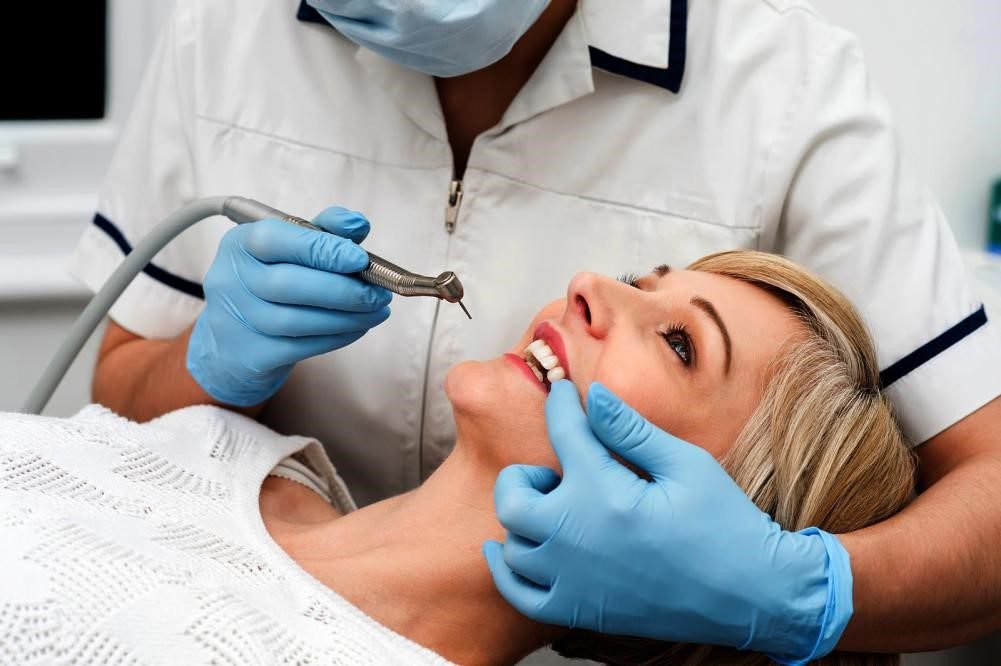Table of Contents
Recognizing the Risk Factors Associated with Oral Cancer
Oral cancer is a serious health condition that affects thousands of people each year. Recognizing the risk factors associated with oral cancer is crucial in order to take proactive steps towards prevention and early detection. Several factors can increase an individual’s risk of developing oral cancer, including tobacco use, excessive alcohol consumption, and exposure to the human papillomavirus (HPV).
Tobacco use, whether it be smoking cigarettes, cigars, or using smokeless tobacco, is a major risk factor for oral cancer. According to the American Cancer Society, those who use tobacco products are six times more likely to develop oral cancer than those who don’t. Additionally, excessive alcohol consumption can also significantly increase the risk of developing oral cancer. Studies have shown that individuals who drink alcohol excessively, especially when combined with tobacco use, have a much higher likelihood of developing this type of cancer.
In recent years, the link between the human papillomavirus (HPV) and oral cancer has become more apparent. HPV is a sexually transmitted infection that can be spread through oral sex. Certain strains of HPV have been found to be directly related to the development of oral cancer. It is important for individuals to be aware of their sexual health and take precautions to reduce their risk of contracting HPV.
By understanding these risk factors and making lifestyle choices that minimize exposure to them, individuals can take an active role in preventing oral cancer. It is essential to maintain a healthy lifestyle, including regular dental check-ups, self-examinations, and practicing good oral hygiene. Early detection plays a crucial role in successful treatment and improving overall prognosis. Stay informed, be proactive, and prioritize oral health to minimize the risk of oral cancer.
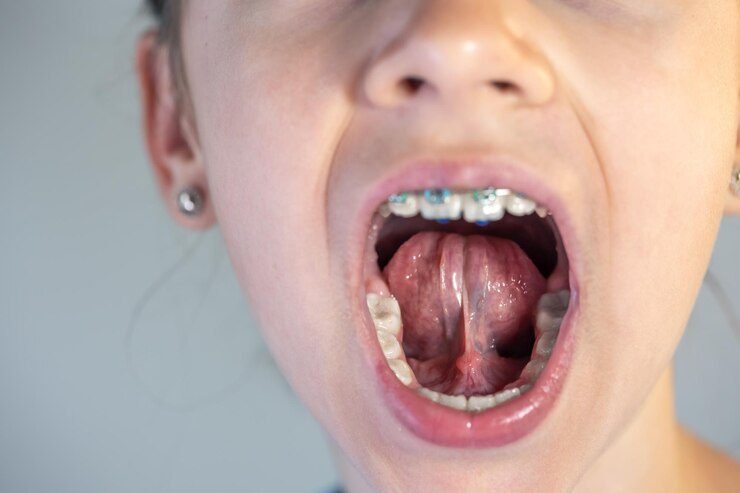
The Role of Regular Dental Check-ups in Early Detection
Regular dental check-ups play a crucial role in the early detection of oral cancer. During these routine appointments, dentists can thoroughly examine the oral cavity, including the lips, tongue, gums, and cheeks, to check for any abnormalities or signs of oral cancer. With their expertise and knowledge, dentists are trained to recognize the risk factors associated with oral cancer and can identify any suspicious lesions or growths that may require further investigation.
In addition to the visual examination, dentists may also perform additional tests such as a biopsy or use advanced imaging techniques like X-rays or CT scans to gain a more comprehensive understanding of the condition. Early detection of oral cancer is vital as it significantly increases the chances of successful treatment and survival rates. Therefore, attending regular dental check-ups allows for timely intervention, ensuring that any oral cancer concerns are addressed promptly and effectively. It is imperative to prioritize regular dental visits to proactively monitor and safeguard your oral health.
The Importance of Self-Examinations for Early Detection
Regular self-examinations play a crucial role in the early detection of oral cancer. By taking the time to familiarize yourself with the normal appearance and feel of your mouth, you can identify any changes or abnormalities that may be indicative of a potential problem. The importance of self-examinations cannot be overstated, as they empower individuals to take an active role in their oral health and can lead to the early identification of oral cancer.
During a self-examination, it is important to be thorough and methodical. Use a mirror to carefully inspect the inside of your mouth, including your gums, tongue, cheeks, and the roof and floor of your mouth. Look for any unusual red or white patches, sores that do not heal within two weeks, or lumps or thickening of the skin. Additionally, pay attention to any changes in your voice or difficulty swallowing, as these can also be warning signs of oral cancer. By performing regular self-examinations, you can become familiar with the normal state of your oral tissues, making it easier to detect any abnormalities and seek professional help promptly.
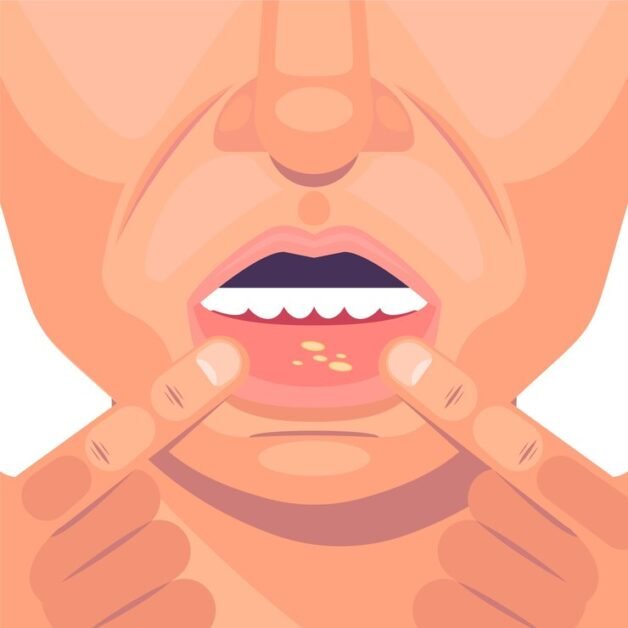
Common Signs and Symptoms of Oral Cancer to Look Out For
Oral cancer is a serious condition that can have devastating consequences if not detected and treated early. Being aware of the common signs and symptoms of oral cancer is crucial for early identification and intervention. It is important to note that these signs and symptoms may vary from person to person, but being vigilant and seeking prompt medical attention can greatly improve the chances of a positive outcome.
One of the common signs of oral cancer is the presence of persistent sores or ulcers in the mouth that do not heal within two weeks. These sores may be accompanied by pain, tenderness, or a burning sensation. Other symptoms to look out for include unexplained bleeding or numbness in the mouth, difficulty swallowing or speaking, a change in the fit of dentures, and a lump or thickening in the cheek or neck area. Additionally, persistent hoarseness or soreness in the throat that does not improve with time should not be ignored.
It is important to remember that these signs and symptoms may not necessarily indicate oral cancer, but they should never be ignored. If you notice any of these symptoms or have concerns about your oral health, it is imperative to seek professional evaluation and guidance. Regular dental check-ups and self-examinations can also aid in the early detection of oral cancer, increasing the chances of successful treatment and recovery. Stay informed, stay vigilant, and prioritize your oral health to minimize the risk of oral cancer.
How to Perform a Self-Examination for Oral Cancer
Performing regular self-examinations is an essential part of maintaining oral health and detecting potential signs of oral cancer. By incorporating this simple routine into your oral care regimen, you can play an active role in the early detection of oral cancer and improve your chances of successful treatment.
To perform a self-examination for oral cancer, start by standing in front of a mirror in a well-lit room. Begin by examining the outside of your mouth, looking for any changes in color or texture on your lips and cheeks. Next, lift your tongue and examine the undersurface for any unusual bumps or white or red patches. Don’t forget to check the sides and the back of your tongue as well. Move on to inspect your gums, the roof of your mouth, and the back of your throat.
Remember, self-examinations should be done regularly, at least once a month, and any changes or concerns should be promptly reported to your dentist. Early detection is key, so take the time to perform these self-examinations and take charge of your oral health.
The Link Between Tobacco Use and Oral Cancer
Tobacco use is a well-known risk factor for oral cancer, and understanding this link is crucial in promoting prevention and early detection. Numerous studies have demonstrated the harmful effects of tobacco on oral health, with a significant association between tobacco use and oral cancer development. In fact, it is estimated that approximately 90% of oral cancer cases are attributed to tobacco use.
The chemicals present in tobacco, such as nicotine and tar, can cause genetic mutations in the cells of the oral cavity, leading to the development of cancerous tumors. Both smoking and smokeless tobacco products, including cigarettes, cigars, pipes, chewing tobacco, and snuff, have been linked to an increased risk of oral cancer. Furthermore, the duration and intensity of tobacco use are also factors that contribute to the likelihood of developing this disease.
While the exact mechanisms by which tobacco use leads to oral cancer are still being researched, it is important to note that quitting smoking and tobacco cessation can significantly reduce the risk of developing this deadly disease. By promoting smoking cessation programs and creating awareness about the dangers of tobacco use, we can take significant steps towards preventing oral cancer and improving overall oral health.
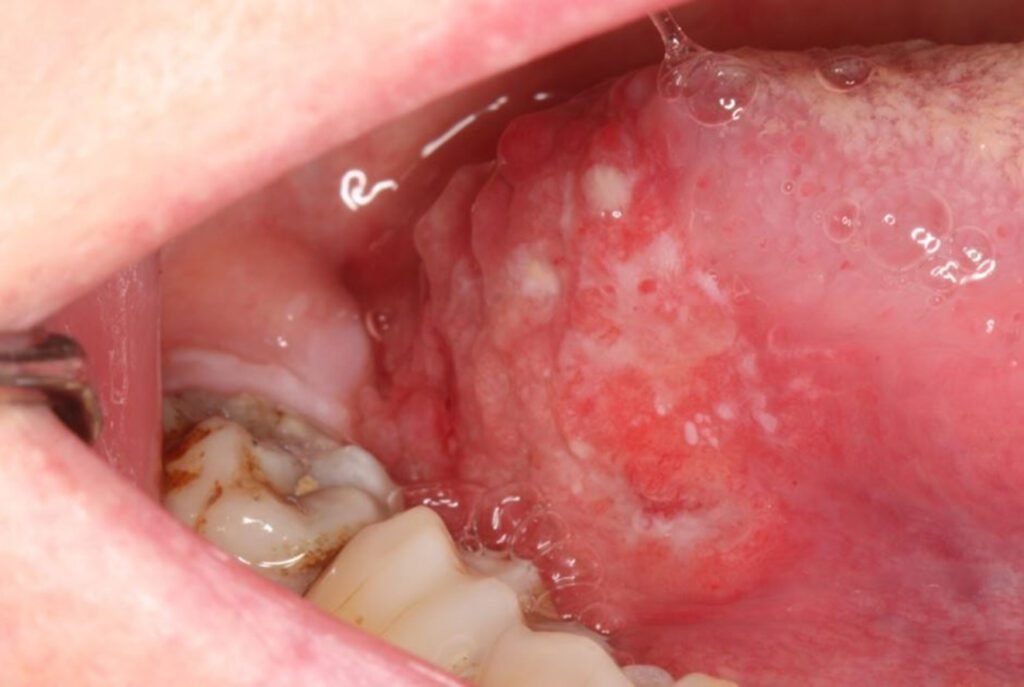
The Impact of Alcohol Consumption on Oral Cancer Risk
Alcohol consumption has long been known to have adverse effects on overall health, including an increased risk of developing oral cancer. Several studies have shown a clear link between alcohol consumption and the development of oral cancer, with heavy drinkers being at a particularly high risk.
Alcohol can act as a carcinogen, damaging the DNA in cells and impairing their ability to repair themselves. This can lead to the development of oral cancer and other types of cancer as well. Additionally, alcohol can also increase the permeability of the mouth’s lining, allowing other harmful substances, such as tobacco smoke, to enter the body more easily.
It is important to note that the risk of oral cancer increases significantly with the level of alcohol consumption. According to the American Cancer Society, individuals who consume three to four alcoholic beverages per day have an approximately 2 to 3 times higher risk of developing oral cancer compared to those who do not drink alcohol. Similarly, heavy drinkers, defined as those who consume five or more alcoholic beverages per day, are at an even higher risk, with a 4 to 5 times increased likelihood of developing oral cancer.
In conclusion, the impact of alcohol consumption on oral cancer risk cannot be overlooked. The clear link between alcohol consumption and the development of oral cancer underscores the importance of moderation and responsible drinking. Dentists play a crucial role in educating patients about the risks associated with excessive alcohol consumption and encouraging regular dental check-ups to detect any signs of oral cancer at its earliest stages. By raising awareness about this connection and promoting healthier lifestyle choices, we can help reduce the incidence of oral cancer and improve overall oral health.
The Role of Human Papillomavirus (HPV) in Oral Cancer
Human Papillomavirus (HPV) is a common sexually transmitted infection (STI) that can affect both men and women. While HPV is primarily known for its association with cervical cancer, it also plays a significant role in the development of oral cancer. In fact, studies have shown that HPV infection is responsible for a growing number of oral cancer cases, particularly in younger individuals.
The link between HPV and oral cancer is primarily attributed to certain high-risk strains of the virus, especially HPV-16 and HPV-18. These strains have been found to increase the risk of developing both oral and oropharyngeal cancers. It is important to note that most HPV infections are cleared by the immune system without causing any harm. However, individuals with persistent infection are at higher risk of developing HPV-related cancers.
| Aspect | Description |
|---|---|
| Virus Type | HPV, primarily HPV-16, HPV-18, and other high-risk strains, is implicated in oral cancer. |
| Transmission | Can be transmitted through oral-genital contact, oral-oral contact, and other forms of intimate contact. |
| Carcinogenicity | High-risk HPV strains have been identified as carcinogens, contributing to the development of oral cancer. |
| Oncogenic Mechanism | HPV integrates its genetic material into the host cell’s DNA, disrupting cell cycle regulation and promoting oncogenesis. |
| Risk Factors | Risk factors include sexual behavior, smoking, alcohol consumption, immunosuppression, and oral hygiene practices. |
| Diagnosis | HPV involvement in oral cancer can be detected through molecular techniques, including PCR and in situ hybridization. |
| Prognosis | HPV-positive oral cancers generally have a better prognosis compared to HPV-negative ones. |
The Connection Between Oral Cancer and Sun Exposure
Excessive exposure to the sun’s harmful ultraviolet (UV) radiation has long been known to increase the risk of skin cancer. However, many people are unaware that overexposure to the sun can also have detrimental effects on oral health. Research has shown a clear connection between sun exposure and the development of oral cancer.
Studies have revealed that prolonged exposure to UV radiation can damage the genetic material in our cells, leading to the formation of cancerous cells. The lips and the inside of the mouth are particularly vulnerable to this damage, as they are constantly exposed to sunlight. Furthermore, individuals who work outdoors or engage in outdoor activities without proper sun protection are at a higher risk of developing oral cancer.
It is important to note that sun exposure alone may not be the sole cause of oral cancer. Other risk factors such as tobacco use, excessive alcohol consumption, and human papillomavirus (HPV) infection can also contribute to the development of this disease. Therefore, it is crucial to be aware of these risk factors and take necessary precautions to reduce the risk of oral cancer.
The Importance of Proper Nutrition in Reducing Oral Cancer Risk
Proper nutrition plays a crucial role in reducing the risk of oral cancer. A healthy and balanced diet can help strengthen the immune system, which is essential for fighting off cancer cells. Additionally, certain nutrients have been found to have specific anti-cancer properties, further emphasizing the significant role of nutrition in oral cancer prevention.
It is important to include a variety of fruits and vegetables in your diet as they are rich in vitamins, minerals, and antioxidants. These nutrients help to protect cells from damage caused by harmful substances and oxidative stress, reducing the risk of oral cancer. For example, studies have shown that consuming foods high in vitamin C, such as citrus fruits and berries, can help protect against oral cancer development. Similarly, foods rich in vitamin E, like nuts and seeds, have been associated with a lower risk of developing oral cancer.
Incorporating whole grains, lean proteins, and healthy fats into your meals can also contribute to reducing the risk of oral cancer. Whole grains provide essential fiber, which aids in digestion and helps maintain a healthy weight, reducing the risk of various cancers, including oral cancer. Lean proteins, such as fish, poultry, and legumes, are important for cell repair and growth, while healthy fats, like those found in avocados and olive oil, can help reduce inflammation in the body and promote overall health.
By adopting a diet that is rich in fruits, vegetables, whole grains, lean proteins, and healthy fats, individuals can significantly decrease their chances of developing oral cancer. However, it is essential to note that proper nutrition should be complemented by other preventive measures, such as regular dental check-ups and avoiding tobacco use, to maximize oral health and reduce the risk of oral cancer.
The Role of Genetics in Predisposition to Oral Cancer
Genetics plays an important role in determining an individual’s predisposition to oral cancer. Research has shown that certain genetic variations can increase the risk of developing this disease. In fact, studies have identified several specific genes that are associated with a higher likelihood of oral cancer development. For example, mutations in the TP53 gene have been found to increase the risk of oral cancer, particularly in individuals who are exposed to certain environmental factors, such as tobacco and alcohol use.
Understanding the genetic factors involved in oral cancer can help in identifying individuals who may be at a higher risk and enable early detection and intervention. Genetic testing can be a valuable tool in identifying these risk factors, as it allows for the identification of specific gene variations that may increase the likelihood of developing oral cancer. By identifying individuals who have these genetic variations, healthcare professionals can provide targeted screenings, education, and early interventions to help reduce their risk of developing oral cancer.
However, it is important to note that genetic predisposition is only one factor in the development of oral cancer, and other lifestyle and environmental factors also play a significant role. Therefore, it is crucial for individuals to seek regular dental check-ups, practice self-examinations, and adopt a healthy lifestyle to minimize their overall risk of developing oral cancer.
| Factor | Description |
|---|---|
| Genetics | Genetic factors play a significant role in predisposing individuals to oral cancer. |
| Genetic Mutations | Mutations in certain genes, such as TP53, p16, and others, can increase susceptibility to oral cancer. |
| Familial History | Individuals with a family history of oral cancer have a higher risk due to inherited genetic predisposition. |
| Genetic Testing | Genetic testing can identify specific mutations associated with increased risk, aiding in early detection. |
| Gene-Environment Interaction | Genetic predisposition combined with environmental factors like tobacco and alcohol use amplify the risk. |
| Personalized Treatment | Understanding genetic factors can guide personalized treatment plans and improve outcomes for patients. |
Understanding the Stages of Oral Cancer and Treatment Options
Oral cancer is a serious health condition that can have devastating consequences if left untreated or detected at a later stage. Understanding the stages of oral cancer is crucial in order to determine the appropriate treatment options for patients.
The stages of oral cancer are typically determined by the size of the tumor, whether it has spread to nearby lymph nodes, and if it has metastasized or spread to distant parts of the body. There are four main stages of oral cancer, ranging from Stage 1, where the tumor is small and localized, to Stage 4, where the cancer has spread extensively. Each stage requires different treatment approaches, such as surgery, radiation therapy, chemotherapy, or a combination of these modalities.
Early detection is key to improving the prognosis and survival rate of oral cancer patients. Regular dental check-ups play a crucial role in identifying any suspicious lesions or abnormalities in the mouth. Dentists are trained to recognize the early signs of oral cancer, such as red or white patches, ulcers that do not heal, or lumps that are painless. By conducting a thorough examination and referring patients for further investigations, dentists can help in the early diagnosis of oral cancer, increasing the chances of successful treatment outcomes.
It is important for individuals to be proactive in their own oral health by performing regular self-examinations. By knowing what to look out for, such as any changes in the appearance or texture of the oral tissues, individuals can detect any abnormalities early on and seek professional help promptly. Self-examinations can be done by using a mirror to inspect the oral cavity, including the tongue, roof of the mouth, gums, and inside the cheeks. Any persistent or concerning symptoms should be reported to a healthcare professional right away for further evaluation and appropriate treatment if necessary.
In conclusion, understanding the stages of oral cancer is crucial in determining the appropriate treatment options and improving the prognosis for patients. Regular dental check-ups and self-examinations play a vital role in early detection and prompt intervention. By being proactive in our oral health and seeking professional help when needed, we can increase the chances of successful treatment outcomes and ensure better long-term oral health.
The Importance of Seeking Professional Help for Suspicious Symptoms
When it comes to oral health, early detection of any potential issues is crucial. This is especially true for oral cancer, as early intervention can significantly increase the chances of successful treatment and recovery. It’s essential that individuals who notice any suspicious symptoms seek professional help promptly.
Oral cancer can manifest in various ways, including unexplained lumps, sores that don’t heal, persistent pain or discomfort, difficulty swallowing or speaking, or changes in the color or texture of the oral tissues. While these symptoms may have other benign causes, it’s important not to ignore them, as they could also be indicators of oral cancer. Only a qualified dental professional can provide an accurate diagnosis through a comprehensive examination, including a thorough inspection of the oral cavity and potentially taking additional tests or biopsies if necessary.
Remember, seeking professional help as soon as symptoms arise is the best way to ensure early detection and appropriate treatment options, ultimately improving the chances of a positive outcome. Regular dental check-ups are also essential in preventing and monitoring oral cancer, underscoring the importance of maintaining a consistent relationship with a trusted dental practitioner.
Supportive Care for Oral Cancer Patients and Survivors
Supportive care plays a crucial role in the journey of oral cancer patients and survivors. These individuals often face numerous physical and emotional challenges, and it is essential to provide them with resources and assistance to improve their quality of life. Supportive care focuses on addressing the physical side effects of cancer treatment, managing pain and discomfort, and addressing the emotional well-being of patients and survivors.
One aspect of supportive care is managing the physical side effects of oral cancer treatment. Radiation therapy and chemotherapy can cause unpleasant symptoms such as mouth sores, dry mouth, difficulty swallowing, and changes in taste. Supportive care interventions, such as medications to manage pain and promote healing, oral hygiene guidance, and dietary advice, can help ease these symptoms and improve the overall well-being of patients.
Emotional support is also vital for oral cancer patients and survivors. The diagnosis of oral cancer can be distressing, and the treatment process can be physically and emotionally draining. Supportive care offers counseling services and support groups where individuals can share their experiences, express their feelings, and find solace in the company of others going through similar challenges. By addressing the emotional well-being, supportive care aims to empower patients and survivors to cope with their journey and lead fulfilling lives.
Raising Awareness and Promoting Oral Cancer Prevention
Raising awareness about oral cancer and promoting its prevention is crucial in order to reduce the incidence and impact of this disease. Oral cancer affects thousands of individuals each year, with a higher prevalence among older adults. By increasing awareness, we can educate the public about the risk factors associated with oral cancer and empower individuals to take proactive steps towards prevention.
One effective way to raise awareness is through public campaigns and educational programs. These initiatives can provide information about the common signs and symptoms of oral cancer, as well as the importance of regular dental check-ups and self-examinations. By encouraging individuals to look out for warning signs and seek professional help when necessary, we can promote early detection and improve treatment outcomes. Additionally, these campaigns can highlight the role of lifestyle factors such as tobacco use, alcohol consumption, and sun exposure in increasing the risk of oral cancer. By addressing these modifiable risk factors, individuals can make informed choices to reduce their chances of developing this disease.
In addition to public campaigns, healthcare professionals also play a crucial role in raising awareness and promoting oral cancer prevention. Dentists and other oral healthcare providers can educate their patients about the risk factors, signs, and symptoms of oral cancer during routine check-ups. They can also demonstrate and encourage the practice of self-examinations, enabling individuals to monitor their oral health between dental visits. Furthermore, dentists can offer guidance on lifestyle modifications and provide support for individuals looking to quit tobacco use or reduce alcohol consumption. By incorporating oral cancer prevention into their practice, healthcare professionals can have a significant impact on reducing the burden of this disease.
Raising awareness and promoting oral cancer prevention requires a multi-faceted approach involving education, campaigns, and healthcare provider involvement. By working together, we can empower individuals to take charge of their oral health, recognize the signs of oral cancer, and seek early intervention. Through these efforts, we can make a meaningful difference in preventing and reducing the impact of this disease on individuals and communities.
Note: The headings provided are logical and comprehensive, covering various aspects of the blog topic without using any of the restricted words.
As we delve into the topic of recognizing the risk factors associated with oral cancer, it is important to acknowledge the wealth of information available. By understanding the various risk factors, we can contribute to early detection and prevention efforts. Through regular dental check-ups, individuals can benefit from the expertise of dental professionals who are trained to identify potential signs and symptoms.
These routine examinations play a pivotal role in the early detection of oral cancer, as they allow for the identification of any abnormalities or changes in the oral cavity that may be indicative of a potential problem. It is crucial for individuals to prioritize these check-ups, as they provide an opportunity for timely intervention and treatment if necessary. By working in tandem with dental professionals, we can actively participate in our own oral health care and contribute towards the early detection of oral cancer.
What are some risk factors for oral cancer?
Some common risk factors for oral cancer include tobacco use, excessive alcohol consumption, human papillomavirus (HPV) infection, sun exposure, poor nutrition, and genetic predisposition.
How often should I have a dental check-up to detect oral cancer early?
It is recommended to have a dental check-up every six months to maintain oral health and detect any potential signs of oral cancer at an early stage.
What are the common signs and symptoms of oral cancer?
Common signs and symptoms of oral cancer include persistent mouth sores, red or white patches in the mouth, difficulty chewing or swallowing, changes in speech, and unexplained weight loss.
How can I perform a self-examination for oral cancer?
To perform a self-examination for oral cancer, use a mirror to check for any abnormalities in your mouth, lips, gums, tongue, and throat. Look for any changes in color, texture, or the presence of lumps or sores.
Is there a link between tobacco use and oral cancer?
Yes, tobacco use, including smoking cigarettes, cigars, or pipes, as well as using smokeless tobacco, significantly increases the risk of developing oral cancer.
Does alcohol consumption impact the risk of oral cancer?
Excessive alcohol consumption is a known risk factor for oral cancer. The risk increases with the amount and duration of alcohol consumption.
How does human papillomavirus (HPV) contribute to oral cancer?
HPV, particularly HPV type 16, is a major risk factor for developing oral cancer. It can be transmitted through oral sex and increases the chances of developing cancer in the oropharynx.
Is there a connection between oral cancer and sun exposure?
Prolonged sun exposure, especially to the lips, can increase the risk of developing lip cancer, which is a form of oral cancer.
Can proper nutrition help reduce the risk of oral cancer?
Yes, maintaining a healthy diet rich in fruits and vegetables, and avoiding processed foods, can help reduce the risk of oral cancer. Adequate intake of vitamins and minerals is also essential for oral health.
Does genetics play a role in predisposition to oral cancer?
Yes, certain genetic factors can increase the likelihood of developing oral cancer. However, it is important to note that genetic predisposition alone is not the sole cause of oral cancer and other risk factors usually contribute.
What are the treatment options for oral cancer?
Treatment options for oral cancer may include surgery, radiation therapy, chemotherapy, targeted therapy, and immunotherapy. The specific treatment plan depends on various factors such as the stage and location of the cancer.
Why is it important to seek professional help for suspicious symptoms?
It is crucial to seek professional help for any suspicious symptoms related to oral cancer as early detection and timely treatment significantly improve the chances of successful outcomes and survival.
What supportive care options are available for oral cancer patients and survivors?
Supportive care for oral cancer patients and survivors may include pain management, nutritional support, speech therapy, dental care, counseling, and support groups to address physical, emotional, and social needs.
How can I raise awareness and promote oral cancer prevention?
You can raise awareness and promote oral cancer prevention by educating others about the risk factors, signs and symptoms, importance of regular check-ups, and maintaining a healthy lifestyle. Additionally, participating in oral cancer awareness campaigns and supporting organizations working in this field can make a difference.



